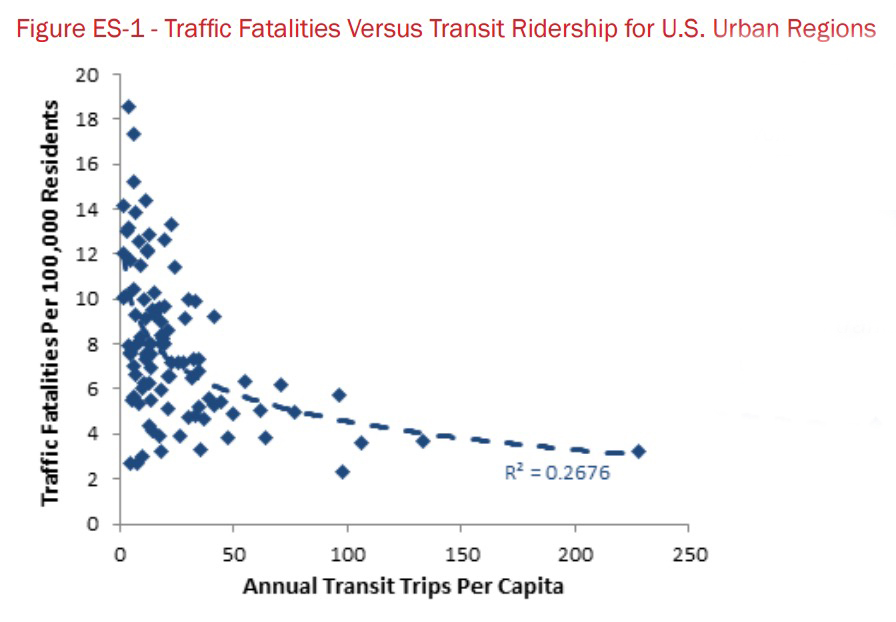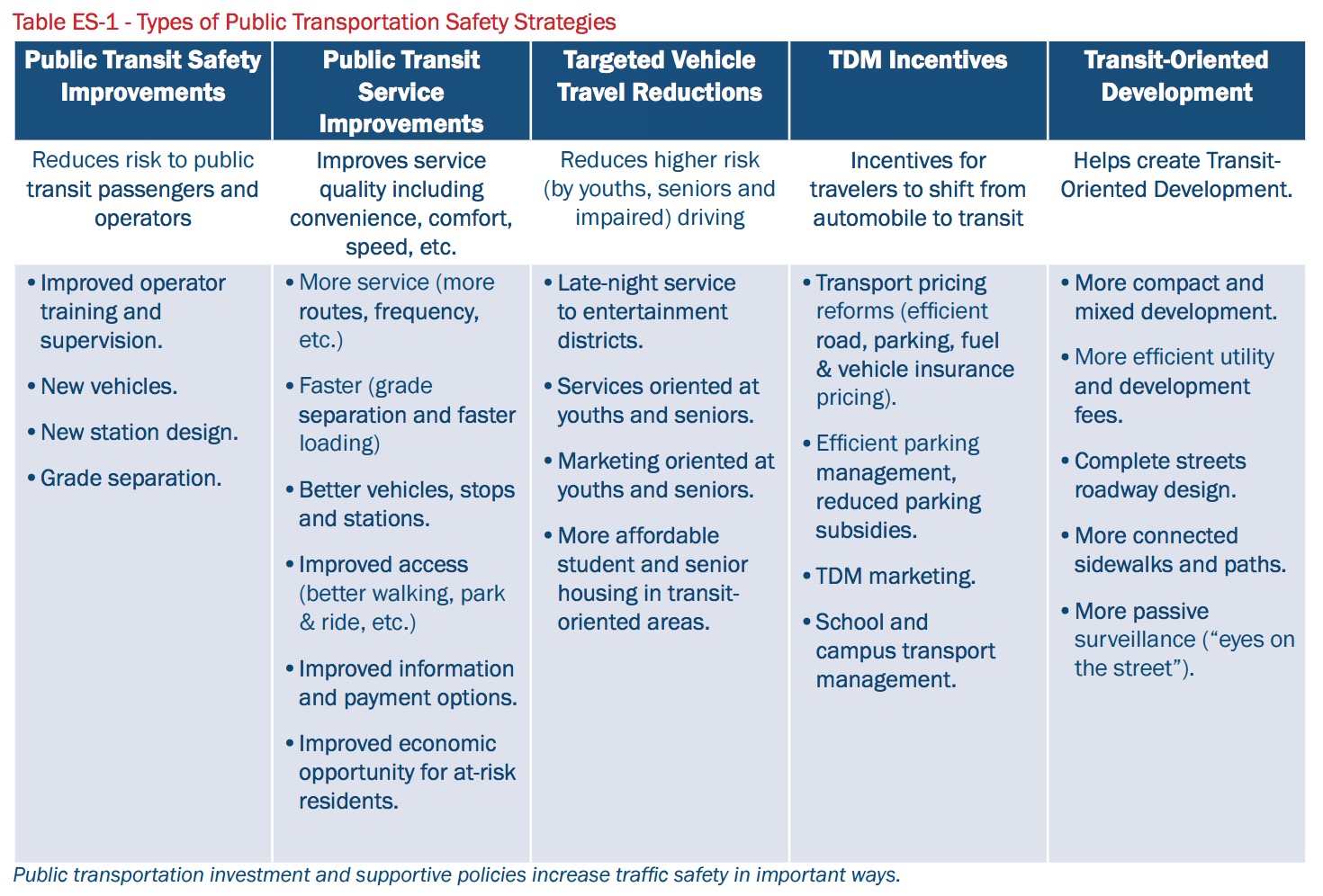AMERICAN PUBLIC TRANSPORTATION ASSOCIATION (APTA)
Quick Facts
Public transportation can help save lives by reducing traffic crashes
Public transportation is one of the safest ways to travel. It is ten times safer per mile than traveling by car because it has less than a tenth the per-mile traffic casualty (injury or death) rate as automobile travel. Public transit-oriented communities are five times safer because they have about a fifth the per capita traffic casualty rate as automobile-oriented communities. In addition, crash rates tend to decline as public transit travel increases in a community. Contrary to popular perceptions, public transit travel is significantly safer than automobile travel.
Credible research indicates that many planning practices that improve public transportation and encourage its use also tend to increase traffic safety. However, these benefits are often overlooked: individuals tend to exaggerate public transit risks; planners tend to overlook safety benefits when evaluating public transit improvements; and traffic experts seldom consider pro-transit policies as safety strategies.
Key takeaways:
- Transit-supportive policies can provide substantial traffic safety benefits, which result in saving lives and reducing injuries.
- Modest increases in public transit mode share can provide disproportionally larger traffic safety benefits.
- Safety strategies intended to reduce higher-risk driving become more effective if implemented in conjunction with public transportation improvements.
- Public transportation investment is among the most cost effective ways to enhance traffic safety for a community
Executive Summary
This report investigates the impacts that public transportation has on traffic safety (crash risk), and the potential for transit-supportive policies (policies that improve and encourage public transit travel, and create more transit-oriented communities) to help achieve traffic safety goals.
Public transportation is overall a very safe form of travel. Its passengers have less than a tenth the per-mile crash rates as automobile occupants, and transit-oriented communities have less than a fifth the total (pedestrian, cyclist, automobile and transit passenger) per capita traffic fatality rates as in automobile-dependent communities.
Traffic casualty rates tend to decline in a community as transit ridership increases. In fact, cities where residents average more than 50 annual transit trips have about half the average traffic fatality rates as cities where residents average fewer than 20 annual transit trips, making public transportation a cost-effective traffic safety strategy.
 This graph illustrates the relationship between per capita transit ridership and total (including pedestrian, cyclist, automobile occupant and transit passenger) traffic fatalities for 101 U.S. cities.
This graph illustrates the relationship between per capita transit ridership and total (including pedestrian, cyclist, automobile occupant and transit passenger) traffic fatalities for 101 U.S. cities.
As transit travel increases, per capita traffic fatality rates tend to decline. Cities where residents average more than 50 annual transit trips have about half the average traffic fatality rates as cities where residents average fewer than 20 annual transit trips.
Two factors help explain these large safety impacts. First, many factors that increase public transportation use, such as good walking and cycling conditions, and compact development, also tend to increase traffic safety. Second, higher-risk groups, including youths, seniors, alcohol drinkers and compulsive texters, are more likely to reduce their driving if alternatives, such as public transit, are convenient and attractive. As a result, efforts to reduce higher-risk driving, such as graduated licenses, senior driver testing, and impaired- and distracted-driving reduction campaigns, become more effective if implemented in conjunction with public transit improvements.
Public transportation investment and supportive policies increase traffic safety in several ways, including reduced crash risk to travelers who shift from automobile to transit, community-wide crash reductions due to less total vehicle travel, and safer traffic speeds. Since most casualty crashes involve multiple vehicles, even responsible drivers who always observe traffic laws and never use public transit benefit from public transportation improvements that help reduce higher-risk driving, and therefore their risk of being the victim of other drivers’ mistakes.
Travel by public transportation is far safer than automobile travel. Intercity and commuter passengers have about one-20th, urban rail and bus passengers about one-30th, per billion passenger-miles as automobile travel (Table 3).
Download full version (PDF): The Hidden Traffic Safety Solution
About the American Public Transportation Association (APTA)
www.apta.com
To strengthen and improve public transportation, APTA serves and leads its diverse membership through advocacy, innovation and information sharing. APTA and its members and staff work to ensure that public transportation is available and accessible for all Americans in communities across the country.
Tags: American Public Transportation Association, APTA, safety








 RSS Feed
RSS Feed